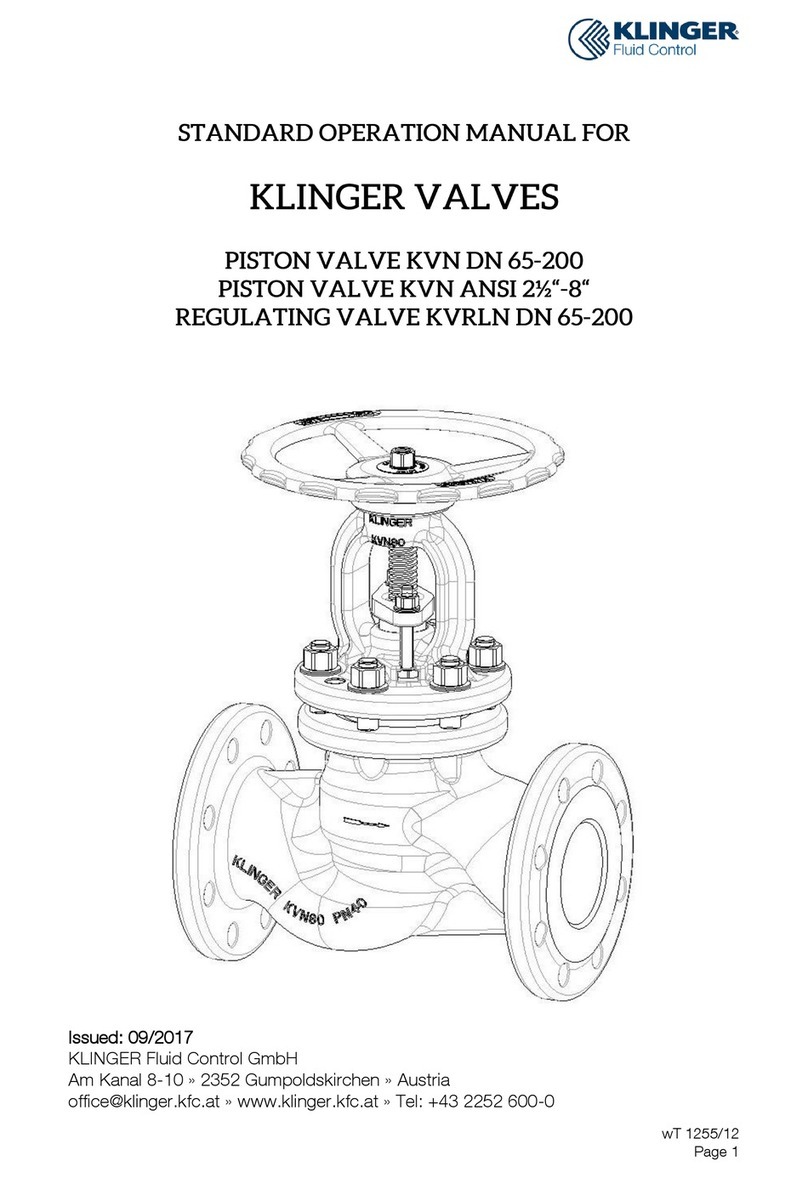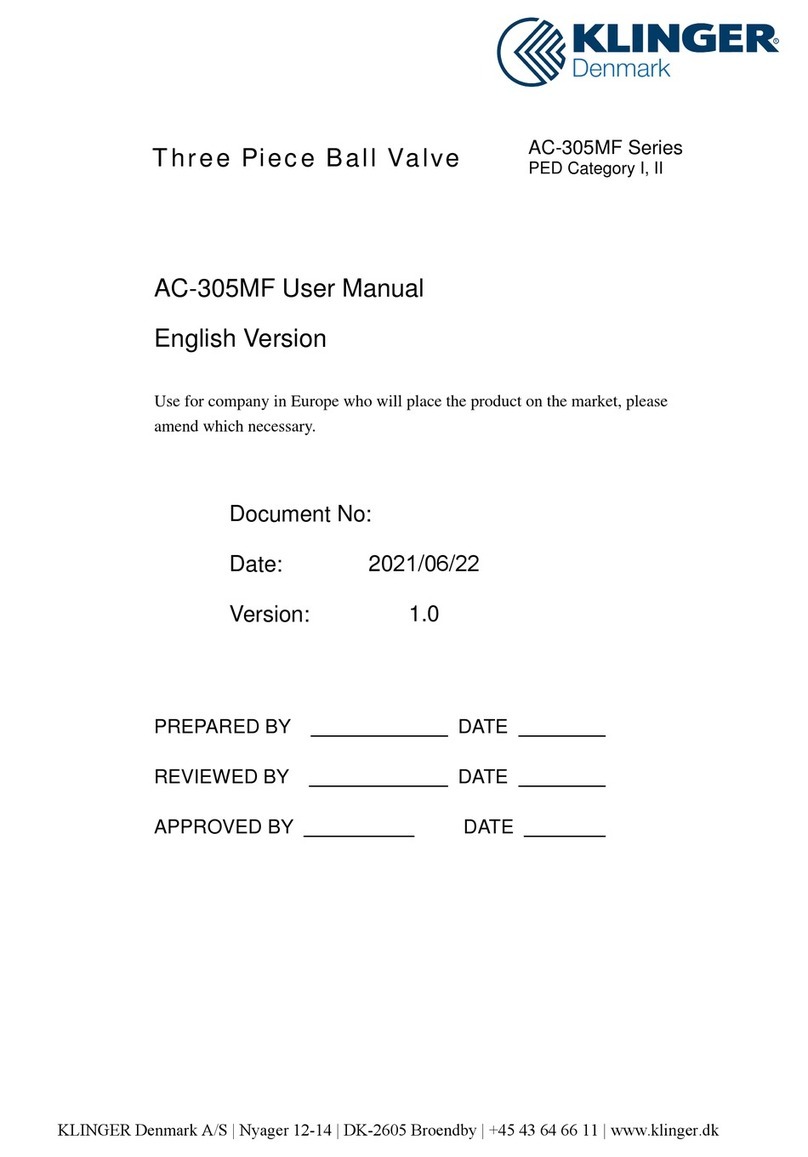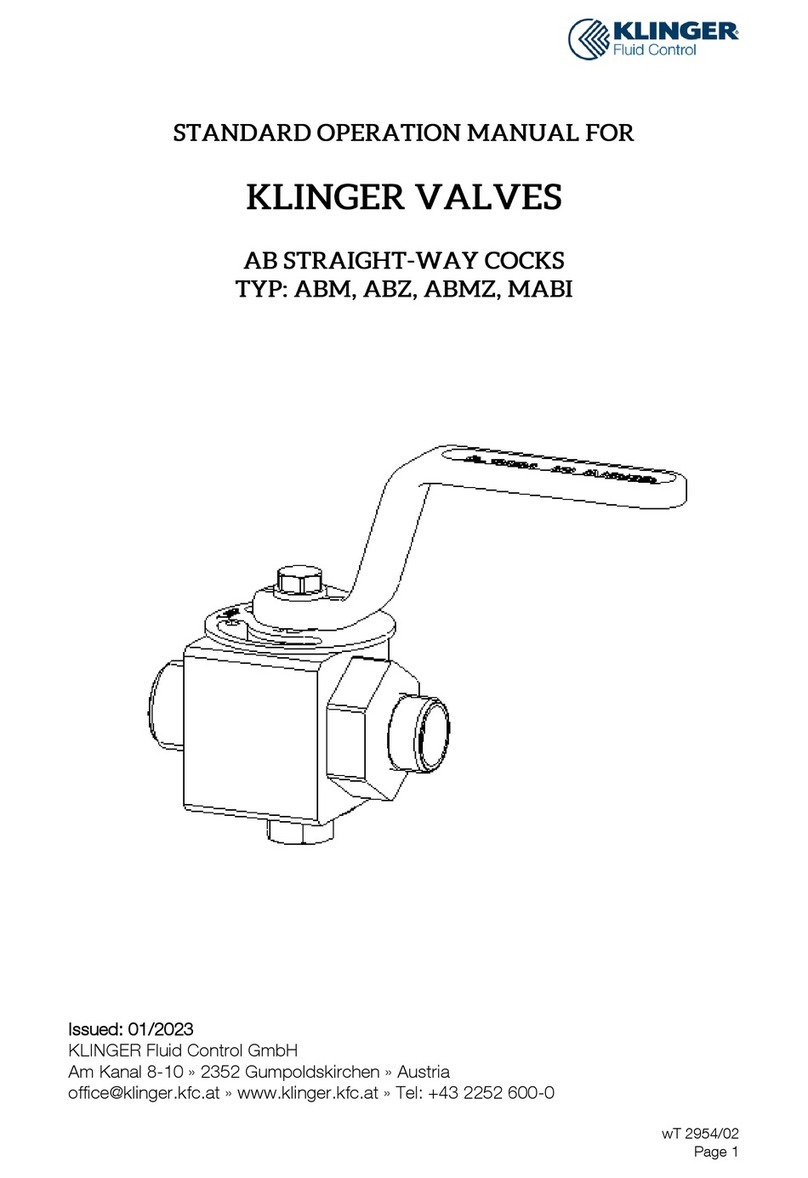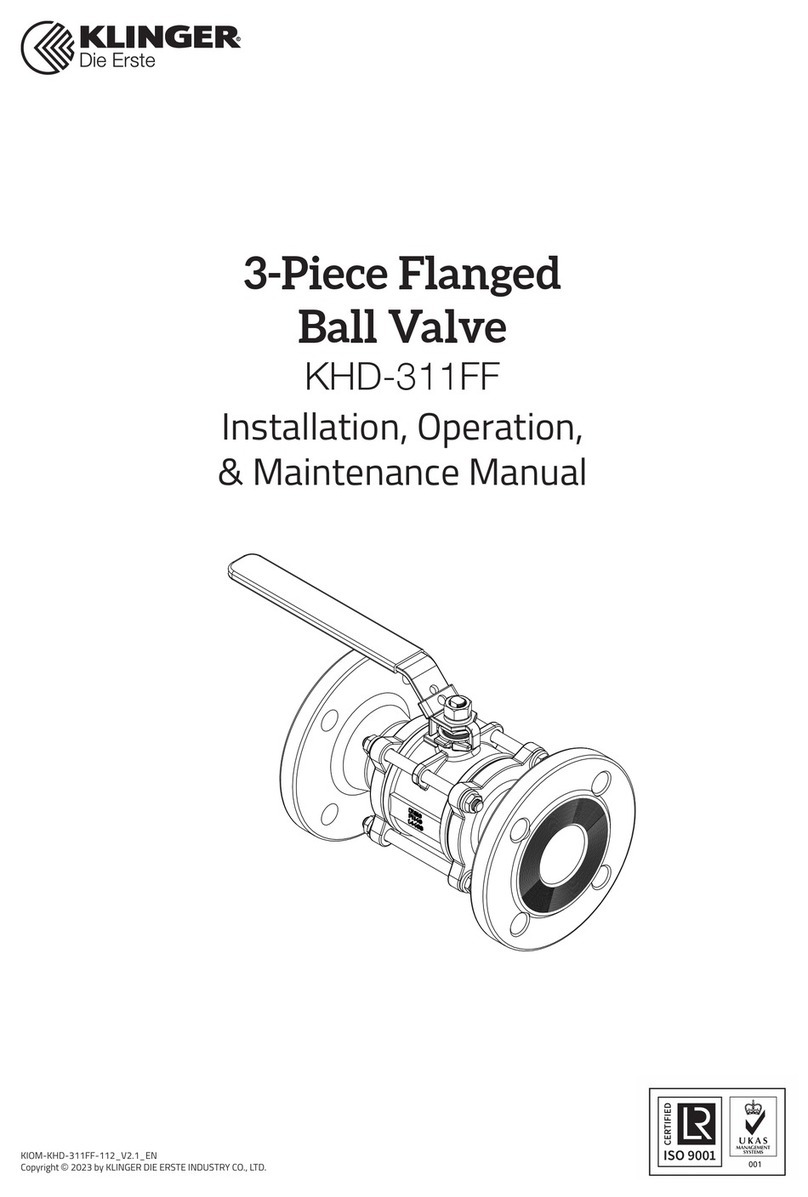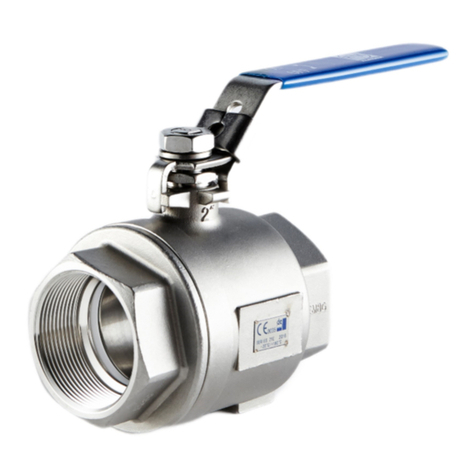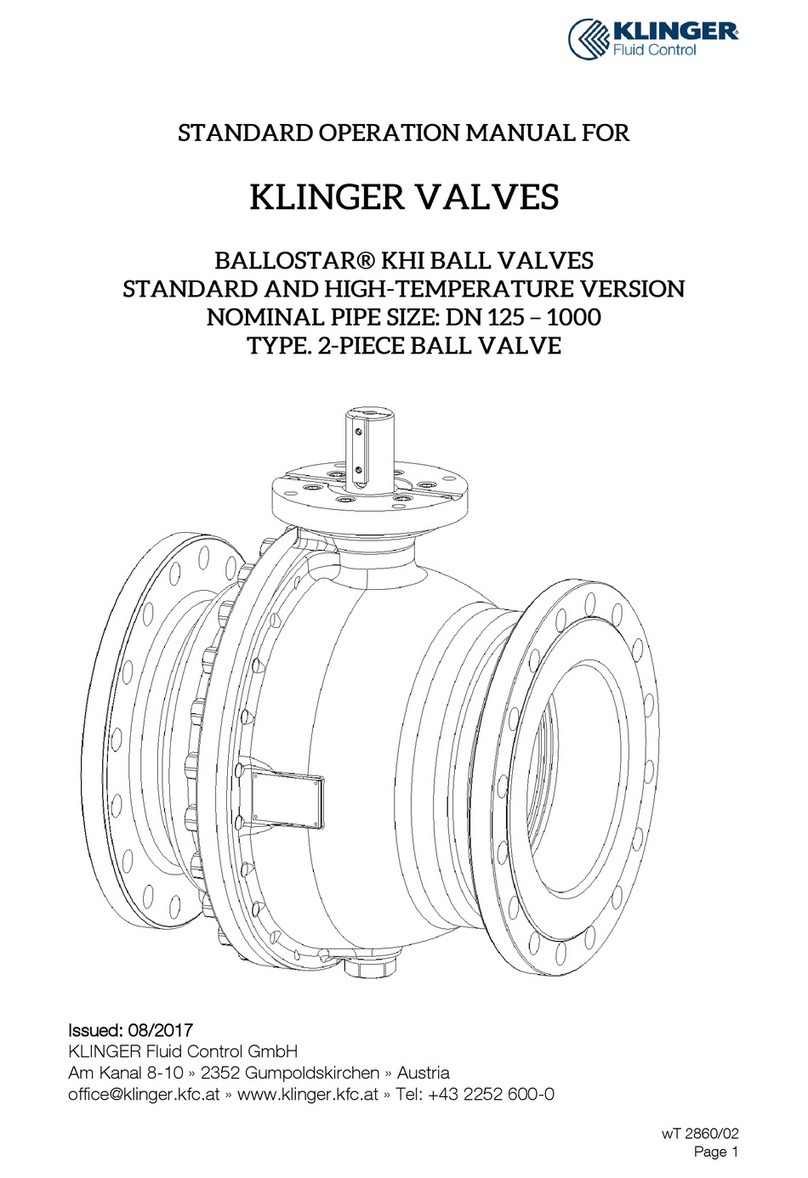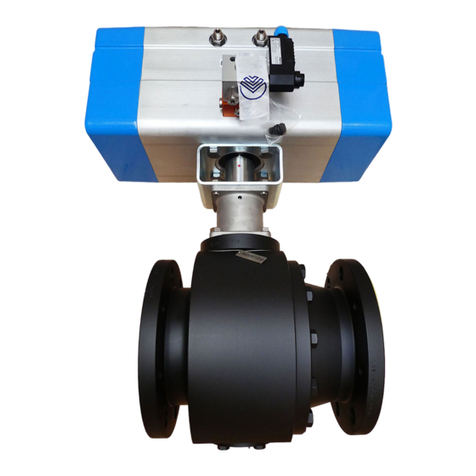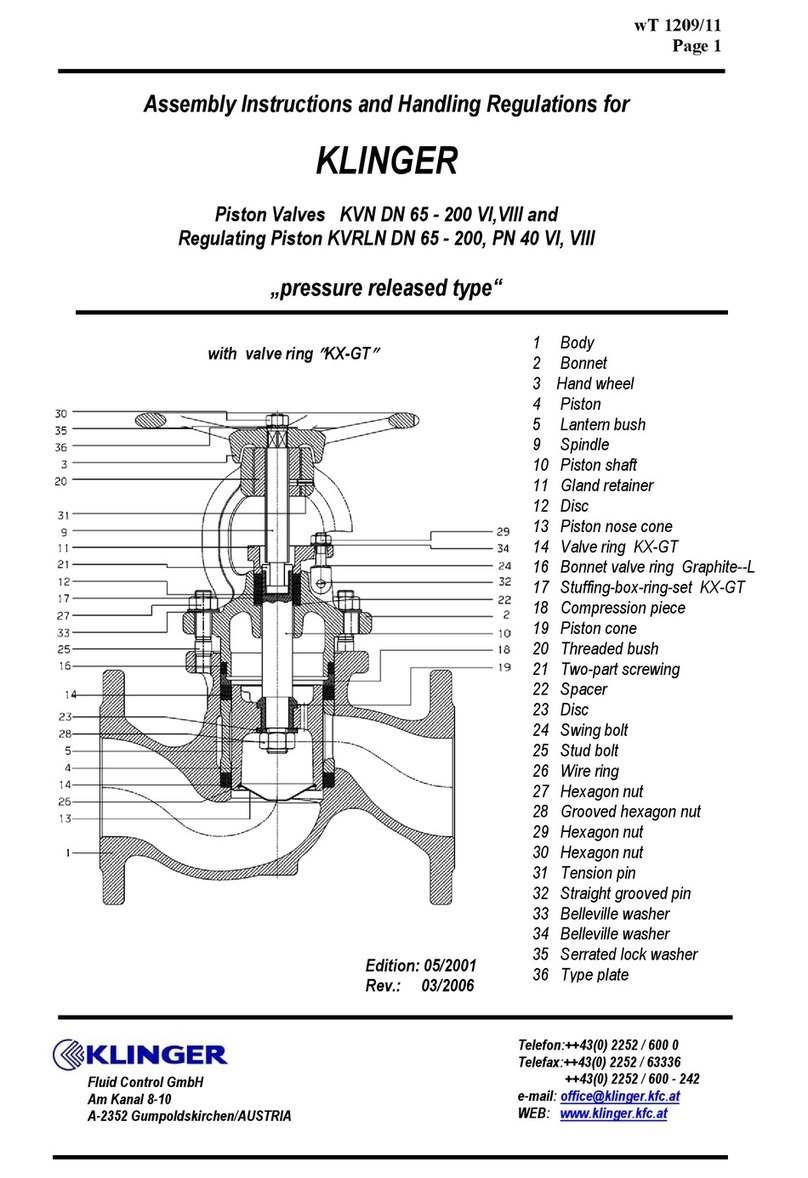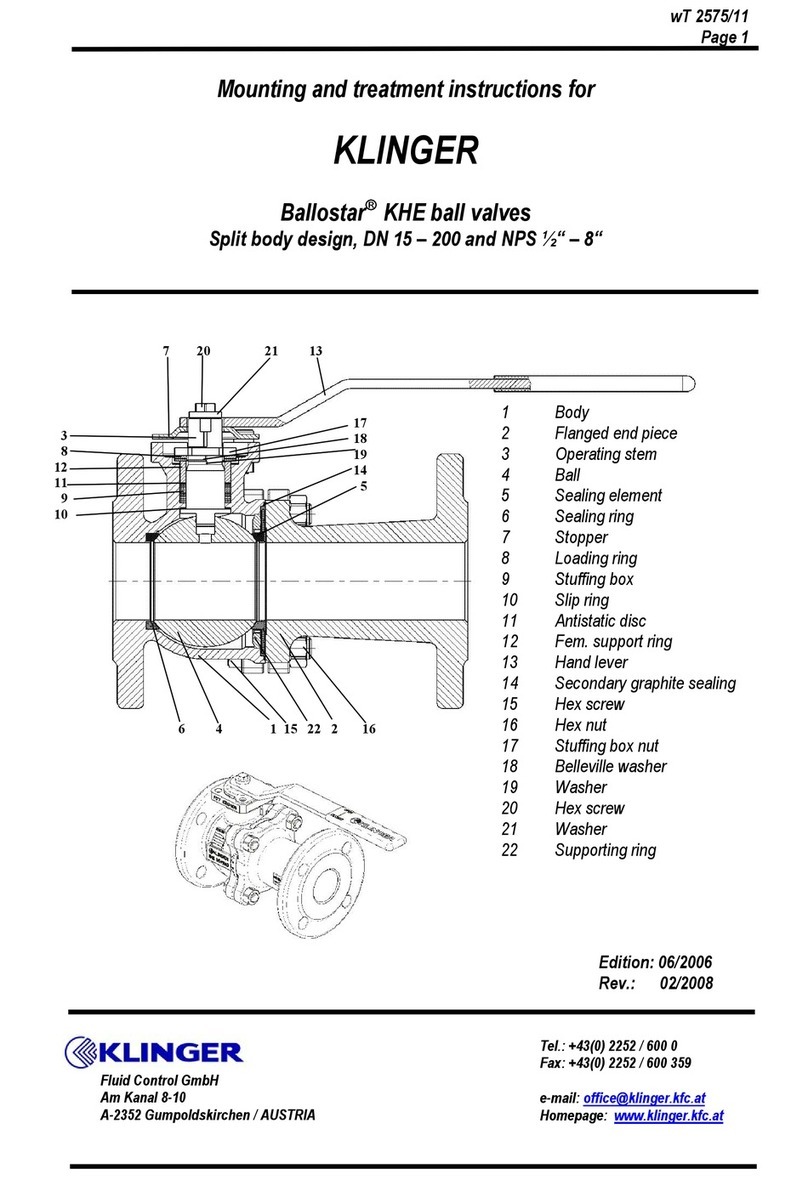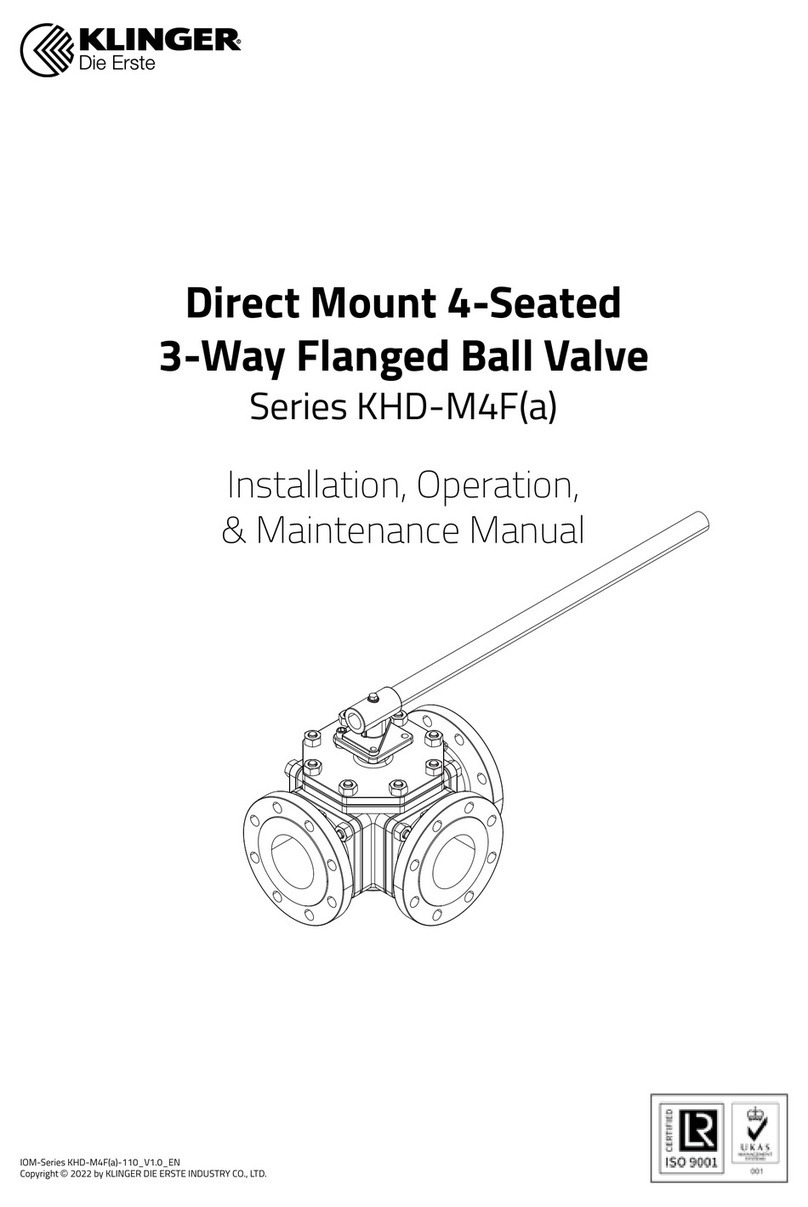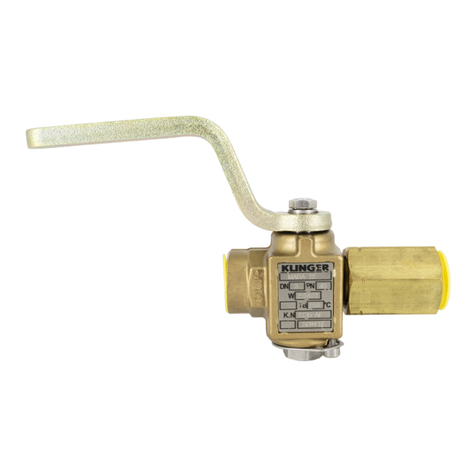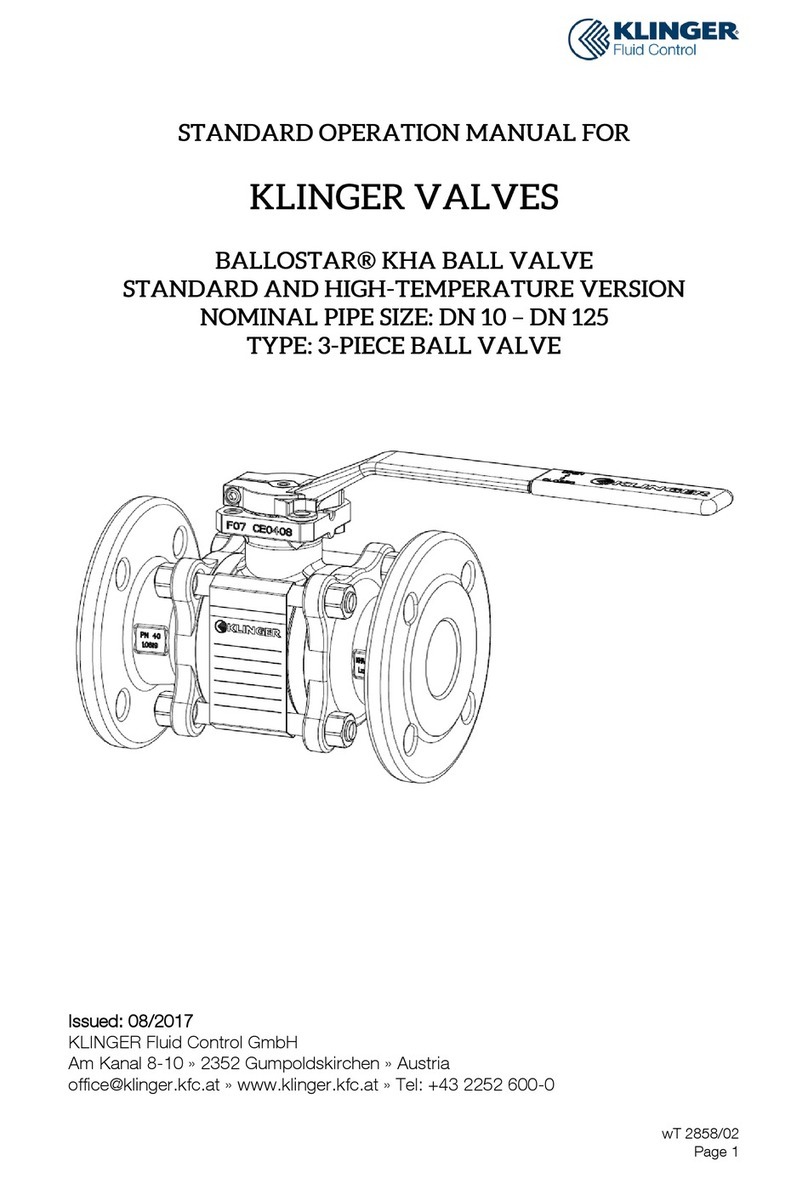
wT 1207/11
Page 6
Klinger piston valves have a very high body strength, the usual attention must be directed to the axially
precise and parallel position of the connections on the system end.
The overall length of the Klinger piston valves with but weld ends was selected to allow welding in an
assembled condition (valve closed)
Klinger recommends to check the temperature development in the area of the valve ring seats for
piston valves with socked weld ends.
Note: If the line and valve are subsequently insulated, the insulation should only extend as far as the
head flange on the body side so that access to the bonnet hexagon nuts (Pos.10) is not impeded.
Since the valve body can remain in site for repairs and maintenance work, the valve insulation
does not need to be removable.
Klinger accepts no liability relating to guarantees, warranties, and product liability legislation for damage
caused by incorrect installation and failure to observe the commissioning regulations.
Operating Instructions for KLINGER PISTON VALVES (KVN series)
Klinger piston valves must be closed clockwise and opened anticlockwise.
When closing the valve the hand wheel should be turned until it adjoins on the bonnet. Unlike globe
valves, piston valves do not require increased final torque. Due to the design of piston valves, a seal
may be achieved before the closed position is reached. To protect the valve rings, piston valves must
always be closed as far as they will go.
As Klinger piston valves can also be used to regulate and to throttle, the above does not apply when
opening the valve or setting it to the open position for regulating or throttling purposes.
Through flow characteristics for valve throttle positions are available from Klinger on request.
If a valve starts leaking, check the tightening torques of the bonnet fastening nuts (10) referring to the
table on page 13 and tighten if necessary. For this the valve needs to be in CLOSED position.
Klinger accepts no liability relating to guarantees, warranties and product liability legislation for damage
caused by failure to observe the operating instructions.

